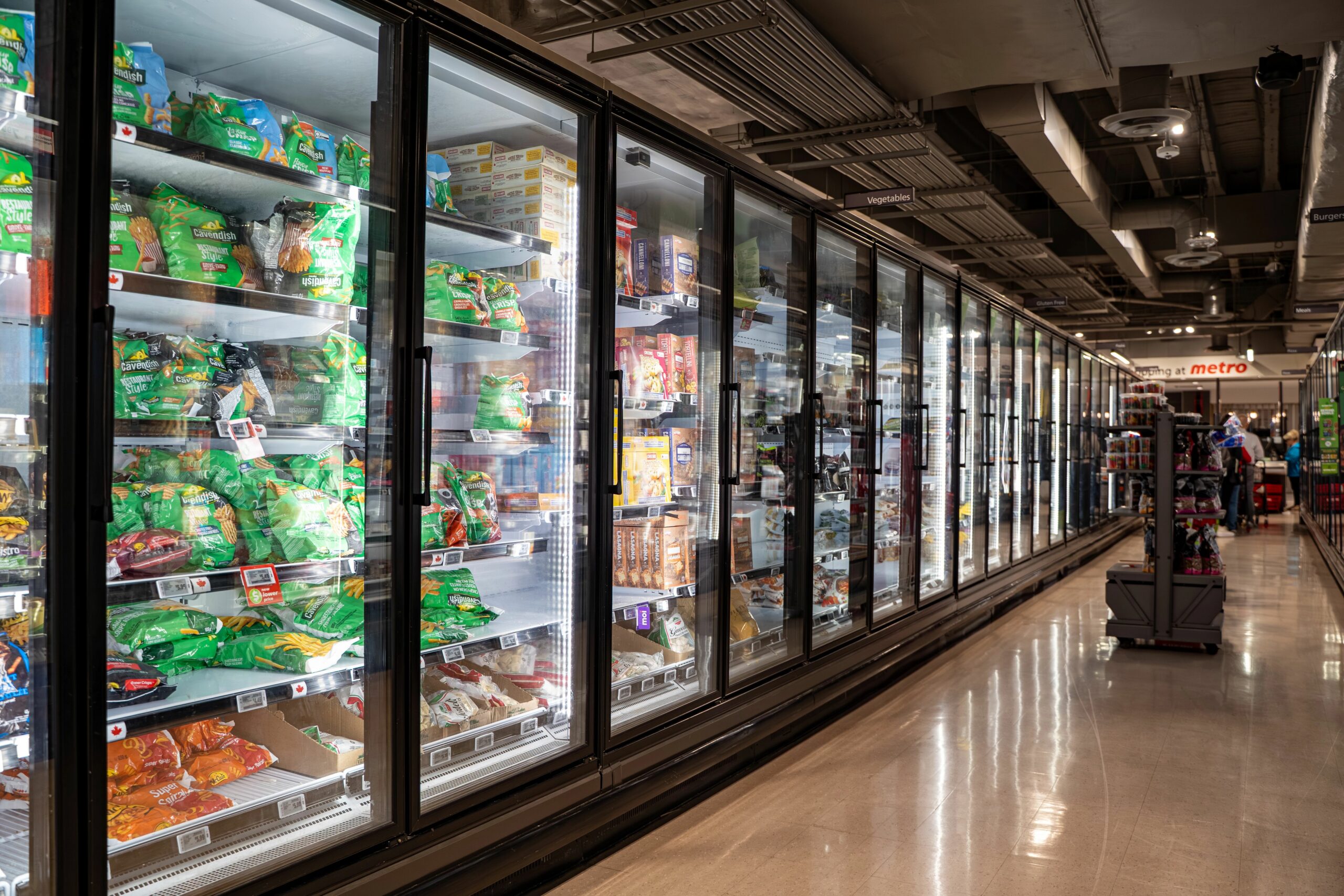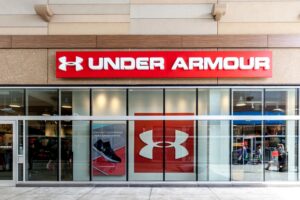
egunes_/Depositphotos.com
October 21, 2025
Does Frozen Food Still Have an Image Problem?
According to dual reports coming from Modern Retail’s Gabriela Barkho and Fortune commentary writers Guy Yehiav and Darin Detweiler, frozen food is having a definitive moment in terms of the U.S. CPG business.
Barkho pointed to numbers coming from the Frozen Food Institute — in January, frozen foods accounted for $8.3 billion in sales that month alone — while Yehiav and Detweiler pulled figures from SmartSense’s “Frozenomics” study indicated that more than half of U.S. consumers polled had turned to frozen foods in response to budgetary concerns tied to a turbulent economy.
Regardless of the source, it appears that the frozen aisle has become a destination for American grocery shoppers of all ages, even if the appeal varies by age cohort.
A few key pieces of data from the “Frozenomics” survey:
- Times are tight: More than half (57%) of U.S. adults reported that their personal economic situation had taken a turn for the worse over the past year, and a greater proportion of nearly two-thirds (65%) said they’d tightened grocery budgets in the same time frame.
- And when times are tight: A substantial number (39%) switch to frozen food due to its longevity in the freezer, and 40% swap out for private label options to save a few dollars.
- Frozen foods seen as a value-based grocery safe haven: A majority (63%) indicated that sales and promotions spur them to stockpile frozen CPGs, and more than a third (34%) stated that economic uncertainty was a trigger to start buying frozen foods in bulk. This behavior, as noted by the study authors, can cause demand spikes which put pressure on cold chain operations.
- Gen Z viewing frozen foods as a “tool for financial survival,” while millennials see them as an “insurance policy”: About three quarters (73%) of Gen Zers said their economic situation had worsened over the last year, and 51% cited the stockpiling of frozen food as an “inflation-proof hack.” Meanwhile, a whopping 91% of millennials keep frozen food around as a “just in case” guarantee — versus an equally impressive 81% of baby boomers — and 70% said they would be buying more frozen CPGs if grocery prices continue to increase.
Despite Strong Demand From All Age Cohorts, Frozen Food Potentially Still Faces an Image Problem
In what Yehiav and Detweiler termed a “PR meltdown in the frozen aisle,” the Fortune report authors gestured toward the recent “radioactive shrimp” headline-grabbing news story as just one example of how bad PR can deeply damage consumer perception of frozen CPGs.
“Frozen products are especially vulnerable because they carry clear branding and often stay in freezers for months; when a recall happens, consumers remember the package and the name. Fresh produce, by contrast, is usually unbranded and long gone before a recall hits,” Yehiav and Detweiler wrote.
“People may also not realize flash freezing preserves freshness and often involves fewer additives than canning. Frozen food isn’t less safe by nature, but its current brand image causes a lingering perception problem,” they added.
The “Frozenomics” stats seem to line up with that claim: Approximately 62% of respondents had thrown out a frozen food item due to safety or quality concerns, 56% believe that inadequate handling during shipping or storage was a common reason for recalls of frozen CPGs, nearly half (45%) said they would quit buying a frozen food brand following a recall, and younger shoppers in particular (47% of Gen Zers) had already halted buying a frozen food brand in response to a recall.
Discussion Questions
Despite consumer appetites for inexpensive and long-lasting frozen food, does it still have a lingering image problem? If so, how important is it for brands to shake this off, and how might this best be accomplished?
How can frozen food brands capture Gen Z loyalty based on their current proclivity to purchase from this category?
Which brands are notable for standing out among peers in the frozen food space? Which established or historical brands are losing shelf space and market share? Why?
Poll
BrainTrust
Georganne Bender
Principal, KIZER & BENDER Speaking
Cathy Hotka
Principal, Cathy Hotka & Associates
Scott Benedict
Founder & CEO, Benedict Enterprises LLC
Recent Discussions







The image of frozen food has improved over time. However, there are lingering negative perceptions – the three main ones being that it is unhealthy, that it is poor quality, and that it lacks freshness and taste. In the US, much of this stems from the terrible job some brands have historically done in categories like frozen ready meals. Where improvements are made, customer perception shifts. You can see this in categories like pizza, where effort has been made around innovation and quality, and consumers are comfortable buying frozen. You also see it at certain retailers – few people have an issue buying frozen at Trader Joe’s or Whole Foods. Other countries also hold lessons: Picard in France is a master of quality frozen foods; M&S’s frozen food range in the UK is very highly regarded.
Does frozen food still have an image problem? Based on what’s happening on social media, and the popularity of Trader Joe’s 5-ingredient dinner recipes, I am going to say no. We’re all time-starved and stressed out; quality frozen foods make dinner prep a little easier.
I’m with Georganne. Done right, frozen food can be delicious and inexpensive. (Can you make a turkey pot pie for less than a dollar?) I won’t predict its demise any time soon.
Frozen still carries a residual “not fresh/over-processed” stigma for some shoppers, but it’s fading—and it’s fixable. The path forward is simple: improve quality. Brands and retailers should lead with transparency (clear ingredients, sourcing), elevate culinary cues (chef partnerships, premium recipes), and improve the in-aisle and at-home experience (better packaging, cooking guidance, and consistent results). Frozen products are unusually “memorable” when something goes wrong (e.g., recalls or poor quality), so rebuilding trust requires visible quality signals and relentless execution.
Gen Z is primed for frozen loyalty because the category meets their core needs: value, speed, and nutrition control—if quality is obvious and the results are craveable. Win them with bold global flavors, portionable formats, and content that demystifies “how to cook it right” (short videos, QR-driven tips). This is also where innovation matters: newer tech like 5 Minute Gourmet’s “Acoustic Freezing Technology” aims to lock in texture and taste, offering restaurant-like outcomes in five minutes—exactly the payoff younger shoppers expect from modern frozen. Use marketplace tests, limited drops, and social proof to turn trial into a habit.
Who stands out? The brands that deliver repeatably great eating experiences and visible innovation; those that don’t are losing facings as retailers prune underperformers. As a positive example, 5 Minute Gourmet illustrates how tech-led methods and chef-crafted recipes can raise quality perceptions and justify premium placement—showing the category can move beyond “cheap and shelf life” to “fast and phenomenal.” In a crowded set, taste wins first, then clean labels and convenience keep the loyalty.
More consumers may fill their freezers with frozen items if they’re aware the items don’t spoil like fresh produce, they preserve nutrients and they’re affordable.
My Gen Z switched from a popular smoothie chain to making açaí bowls at home using private labels (Walmart’s Great Value line) precisely because of the value for money.
Many supermarkets rely on their fresh produce offerings to establish brand image with shoppers, but it’s worth calling out frozen ingredients like precut veggies, berries and proteins for their value and nutritive qualities. Many of these carry private label or packer brands. In my years following the grocery trade, safety recalls have been rare in these categories.
Frozen prepared foods are more often branded and carry long ingredient lists, that may include high sodium and ultra-processed ingredients. (Have you ever noticed how many frozen pizza and burrito SKUs are carried in a typical supermarket?)
While freezer space is a limited resource in grocery stores, there is room in some assortments for healthier convenience food offerings. Younger households might respond to an “eat well, pay less” marketing message around frozen foods.
Frozen’s negative moments replay every time you open the freezer—branded packaging creates compounding memory in ways fresh produce never does. The solution is generational: Gen Z has already reframed frozen as financially smart, but brands haven’t caught up.
The winning play isn’t convincing them frozen equals fresh; it’s positioning frozen as values-aligned: sustainability over performance, intentionality over aspiration. Trader Joe’s cracked this by making frozen a badge of smart shopping. National brands still apologizing for not being fresh are solving yesterday’s problem.
The 51% calling frozen an “inflation-proof hack” don’t need permission; they need brands that mirror their worldview. Lead with intentionality (financial literacy, anti-waste, pragmatism) and you win Gen Z’s loyalty while keeping Millennials from defecting to private label. Keep apologizing for being frozen, and you lose across all cohorts.